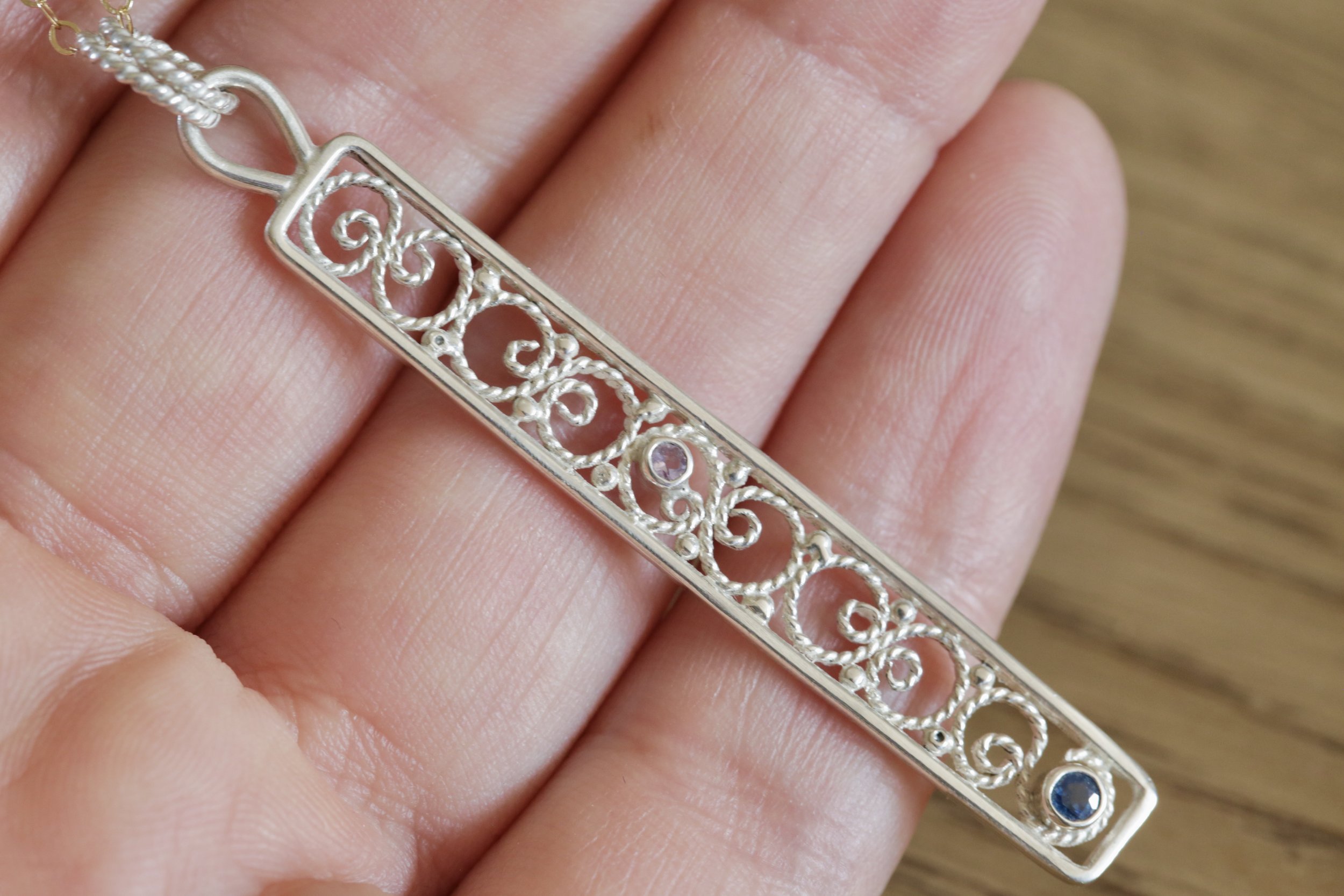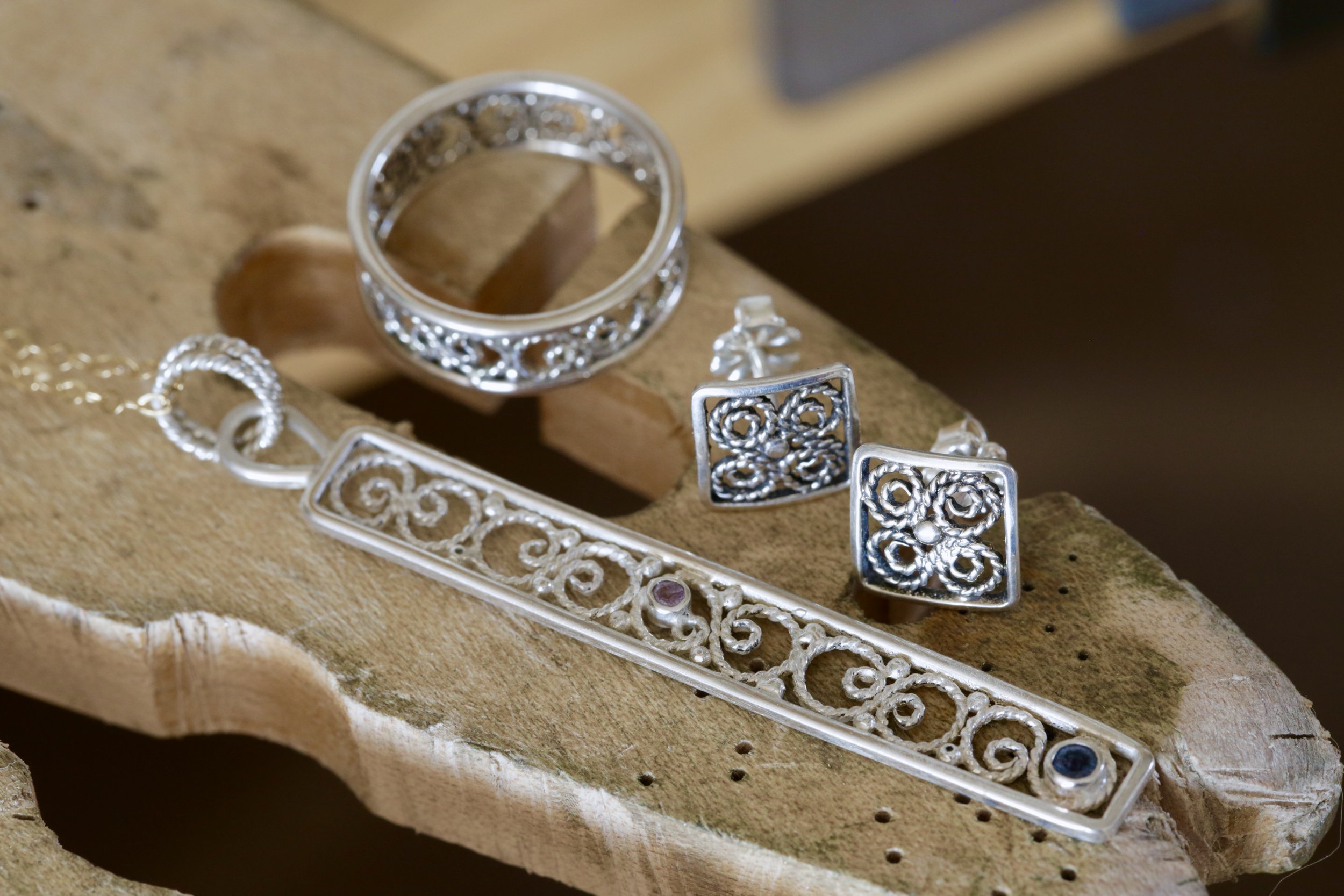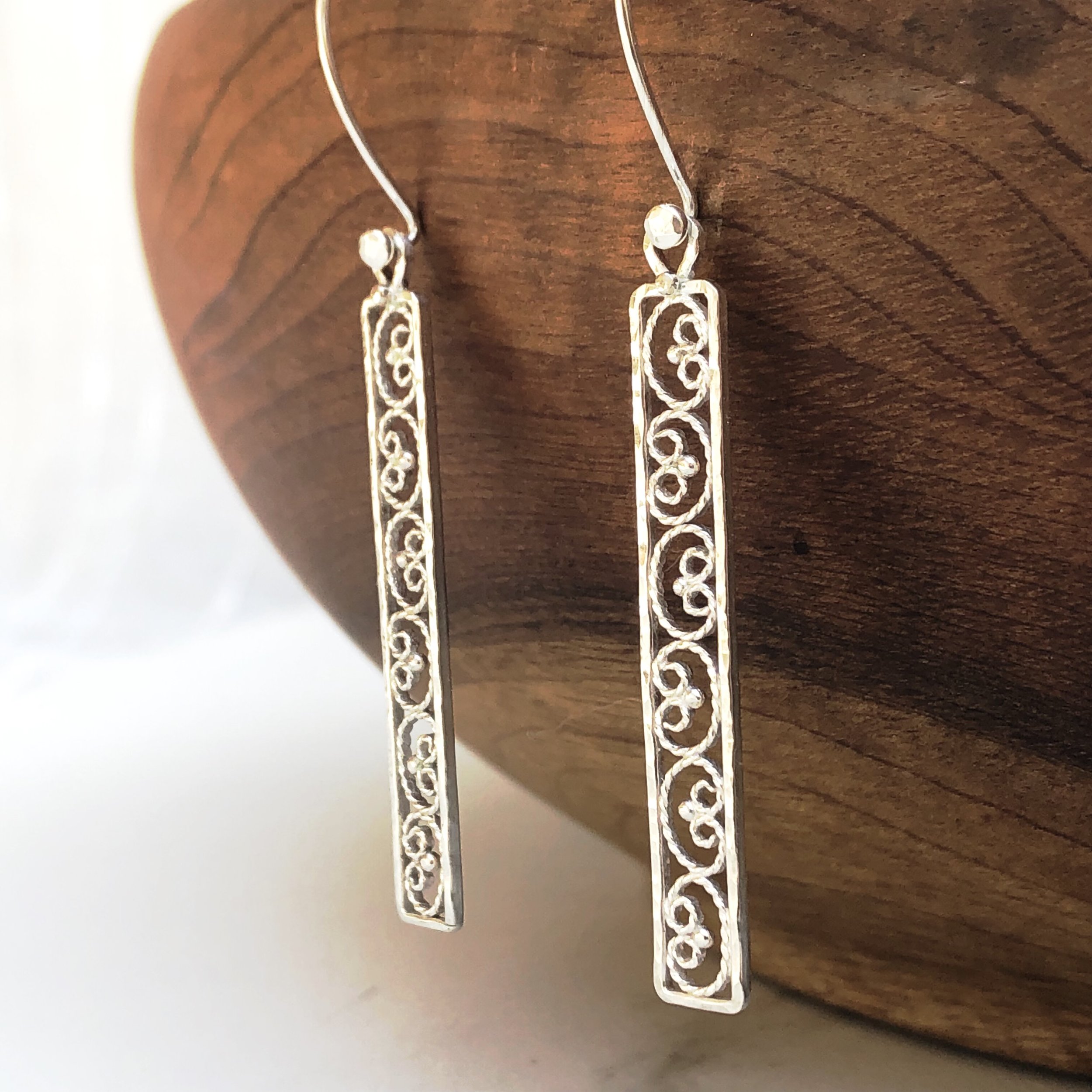What is filigree jewellery?
Filigree is a completely unique style of jewellery and has been incredibly popular since it was invented in the Middle East almost 5000 years ago. But what is it and how is it made? Read on to find out!
What is filigree jewellery?
Filigree is a form of intricate metalwork found in jewellery (as well as other decorative objects) which features interwoven fine wire or threads, which have been coiled or twisted to create exquisite patterns. These delicate patterns or motifs are then soldered together to make all kinds of jewellery such as earrings, necklaces, bracelets, and rings.
There are two main types of filigree jewellery, ‘openwork’ filigree and ‘metal-supported’ filigree. In ‘openwork’ filigree there is no backing to the design and instead stronger wires are soldered together to hold the finer wires in place. This style of filigree has a lace like quality. With ‘Metal supported’ filigree the fine twisted wires are supported by a back plate or sheet of metal.
Filigree jewellery can be made from a variety of metals including gold, silver, copper, and brass. It is also possible to incorporate gemstones or beads just like any other style of jewellery.
Examples of openwork filigree
Example of metal-supported filigree
How is filigree jewellery made?
Filigree jewellery is made by interweaving and coiling fine wires to create delicate patterns.
Here are the basic steps involved in making filigree jewellery:
The first step is to prepare the wire. It is cut into strips and sometimes flattened so that it can be twisted into a variety of shapes and sizes
Once the wire has been prepared, a variety of tools will be used to bend, twist, and solder the wire into the desired shape and design
Once the design is complete, all of the pieces individual will be soldered together
The piece will then be polished and any final touches such as gemstones and beads added afterwards
The history of filigree
The word "filigree" comes from the Latin words "filum," meaning "thread," and "granum," meaning "grain."
Filigree jewellery has been made for centuries, and its history can be traced back to ancient Egypt, Greece, and Rome. The earliest known examples of filigree jewellery date back to the Middle East around 3,000 BC.
It was popular in many cultures throughout history, and it was often used to represent religious or cultural symbols. For example, in ancient Egypt, filigree jewellery was often used to represent the sun god Ra, and in the Middle Ages in Europe it was often used to make crosses and rosaries.
Filigree jewellery was very popular in the Renaissance and is still popular today. It is made in many different countries around the world. Some of the most famous filigree jewellery is made in India, Turkey, and the Middle East.
And although filigree has become a specialist skill for a jeweller, historically it was a skill all jewellers had in their repertoire and used regularly in their work.
Learn the art of filigree on our brand new online course
In this course, suitable for intermediate-level jewellers who are new to filigree, Michelle will guide you through how to make a stunning filigree pendant. Including how to prepare the wire, create different shapes and patterns to come up with your own designs and how to construct a finished piece. Click the link below to learn more!





